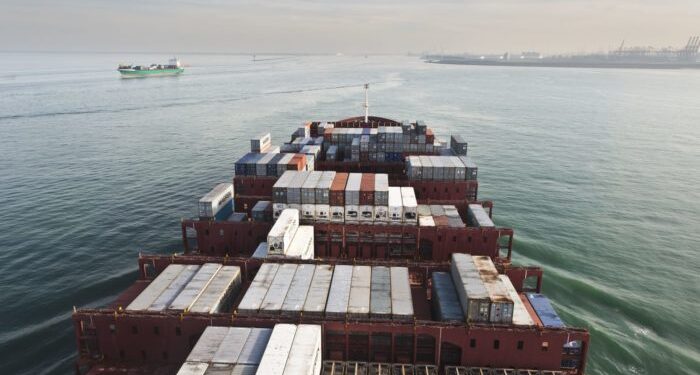A recently launched paper by S. Li, Z.Q. Hu & S.D. Benson, Newcastle University, UK, presents a strength assessment for a damaged container ship suffered from side-collision. In the meantime, a study was conducted to identify the most critical damaged scenario.
The aim is to investigate the ultimate strength performance of a containership under various side-shell damaged scenarios and to propose efficient design methods.
Accordingly, the objectives are:
- parametric analysis of the residual ultimate strength using simplified progressive collapse method
- validation by the nonlinear finite element analysis
- safety margin evaluation with reference to hydrostatic and hydrodynamic results
- development of residual strength index.
Simplified progressive collapse method is employed for the prediction of ultimate strength under vertical bending after a validation using equivalent nonlinear finite element method. A parametric study is conducted to identify the most critical damaged scenario.
According to the paper, the issue of tanker damage stability lies with the complexity of dealing with fluid loss from a damaged tank which may be filled to any level and carrying liquids with a wide potential range of specific gravity (SG).
In addition, when it allies with empty, part-filled or full tanks and multi-compartment side or bottom / raking damages, demonstration of compliance can be problematic even though the regulations permit the simplifying assumption that all the fluid in the damaged compartment is instantaneously lost and replaced by seawater up to the outside damaged equilibrium waterline.
It is noted that it is possible to comply, by consulting ‘simplified stability information’ namely ‘condition’ or ‘generic’ combined (intact and damaged) critical limiting KGf or GMT curves – however, in order to fully cover the wide range of possible loading scenarios such information is difficult to produce and present in a concise and accessible manner and hence their application is often not ‘simple’ or quick.
Over a decade ago, inspections of tankers established, in many instances, that such verification and approval of damage stability compliance was not being undertaken. It was also revealed that there was a considerable lack of awareness of the complexity of damage stability calculations, with many loading officers believing, for example, that compliance with the intact stability criteria alone was sufficient.




























































